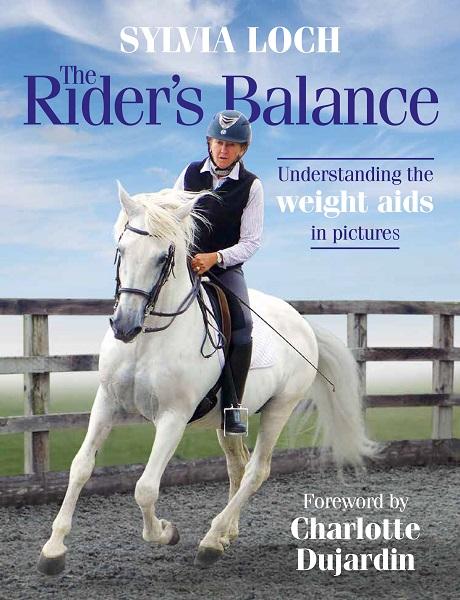
Book Review: ‘The Rider’s Balance’
By Sylvia Loch.
Sylvia Loch’s The Rider’s Balance is a solid, well-done book discussing the finer details of how the rider’s weight aids impact the horse. While it’s a dressage book, I feel riders of any discipline could benefit from it.
The book opens with a foreword by Charlotte Dujardin, then segues into an eight-page “about Sylvia” section, which is immediately followed by an introduction serving to discuss Loch’s approach and philosophy in-depth. While I appreciate the inclusion of the “about Sylvia” section, as I wasn’t familiar with Loch’s background or previous work, eight pages plus a separate introduction is too much. Counting the foreword (page nine), the “about Sylvia” section (pages 10-18), and the introduction (pages 18-24), readers don’t get to the actual subject matter until page 24.
Overall, everything could be more concisely written; Loch is often wordier than needed, using bloated phrases like “as well as” when a tighter phrase would suffice. The book would also benefit from a glossary, as it sometimes gets bogged down explaining terminology like “direct rein AKA outside rein” and “indirect rein AKA inside rein,” which, besides slowing the pace also gives it a dumbed-down feeling.
It is well-illustrated, but the layout is just okay, I wish some of the photos were larger, but it works. In that sense, it’s pretty typical; I’ve yet to see a riding/training book that knocks it out of the park with the layout.
Loch’s advice is mostly sound, but there’s one point I do question. On page 64 (bold type mine for emphasis), Loch discusses leg position, writing, “it is much easier for novice riders to drop their legs into the correct position once they take up the rising trot. Pushing off from the stirrup – never the back of the saddle – allows them to develop a good rhythm as well as encouraging the lower legs to remain in place.” Not to dispute a notable classical dressage expert, but I’ve never heard “pushing off from the stirrup” described as correct in posting trot before; I was taught to post with the horse’s motion, and that pushing off/posting off the stirrups was bad. I concede that perhaps this is a misunderstanding on my part as I’m far from an expert, and Loch’s advice may still be sound, but if so, this needs to be phrased so readers understand Loch’s point better. This is the sole phrase I question, though, and otherwise Loch’s points are accurate.
At heart, this is a strong book, though it would be stronger still if it had more clarity and conciseness. While the subtitle is “understanding the weight aids in pictures” this book goes beyond that and discusses the other aids a fair amount, too. Loch’s philosophy is that you don’t “have to be a superb rider to get a superb reaction our of your horse,” and she believes all is possible through patience. While it’s only 164 pages, it’s not a light read; like many riding or training books, there’s a lot of information to take in and process.
Having read it once, it’ll probably take me a few read-throughs to start fully understanding and processing everything; which is not a bad thing. The book covers all levels, starting with the basics and working up to piaffe and passage in the final few chapters. Though it’s marketed to dressage riders, I believe anyone could benefit from reading this and better understanding the finer points of rider position, and I’d recommend this to anyone seeking that better understanding, regardless of their chosen discipline.
The Rider’s Balance is available via Horse & Rider Books/Trafalgar Square.






Leave a Comment